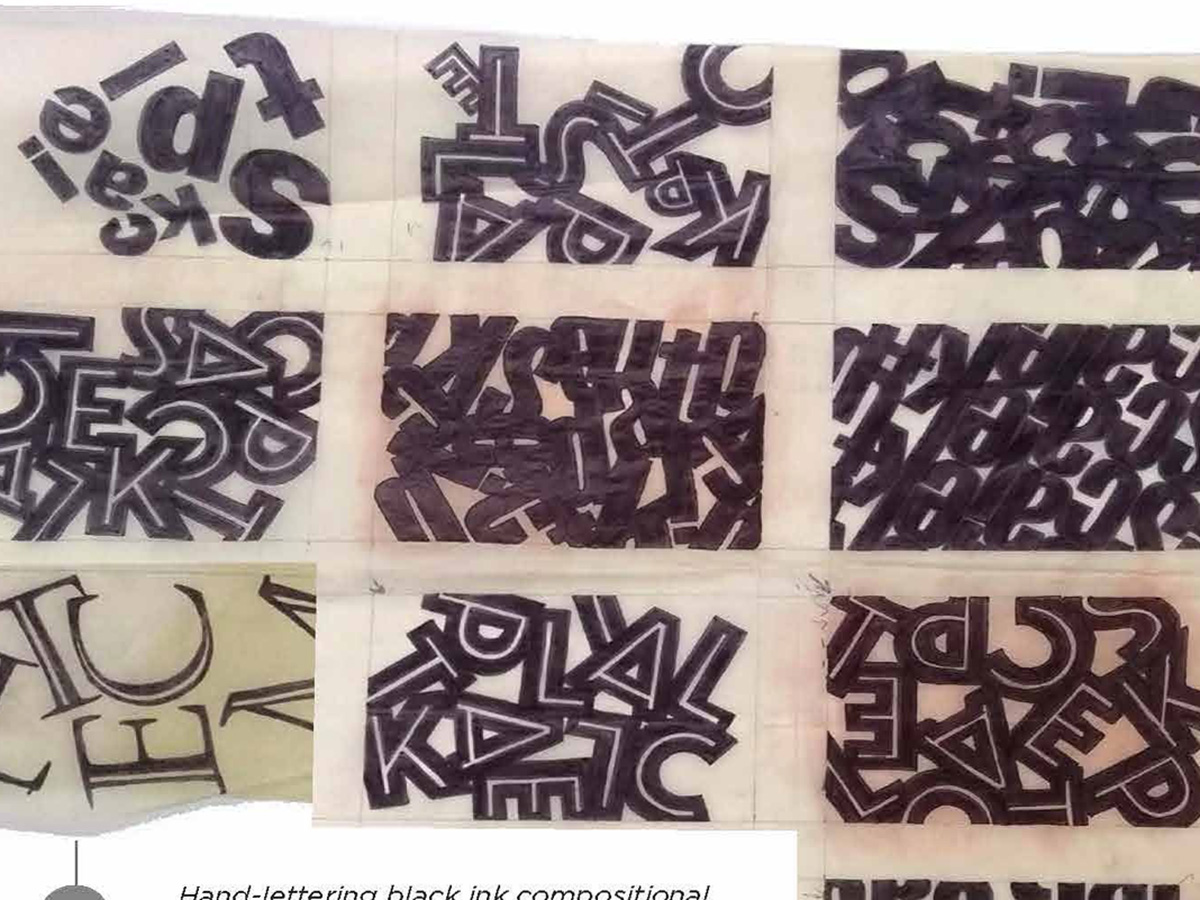Evelyn Davis-Walker
Assistant Professor
Valdosta State University
I have always been interested in the melding of the historical and the contemporary—tradition with experimentation. When designing new and exciting methods of engagement with my design students, I wanted a unique experience that was not offered anywhere else. Upon my arrival to Valdosta State University, I wrote a grant to help acquire letterpress equipment and supplies used in the late 1800s and early 1900s.
My initial interest was to preserve a vital part of graphic design history for students to study and appreciate. What I ended up developing was a proposal in which I infused 100-year old historic machinery with today’s 3D printing and laser cutting technology capabilities. Once I was able to restore the vintage printing press, I recreated type (letters) through the use of 3D printers and laser cutters. Ensuring the letters were the exact size for utilization on the press, I printed specific type/fonts currently unavailable in our library of letters. The ability to customize and create three-dimensional letters and eventually illustrations is game-changing. Students will have the capabilities to print in a traditional method of graphic design while using ideas, styles and messages of a 21st century student.
I am also honored to be featured alongside my fellow Art & Design colleagues in the 4th issue of the 2019 Valdosta State Magazine for my imaginative pairing of old and new processes. In the article, Changing How Art is Made: VSU Merges Old-School Techniques and New Technology to Revolutionize Creative Instruction, I discuss my desire to merge old and new processes in my classroom. My job as an educator is to present content of today to my students, acknowledge what had been done in the past on a historical level, and most importantly, make new pathways for learning for the future.
Students in ART 3091, Introduction to Graphic Design 1, spend the first four weeks off the computer; understanding the history of graphic design through hand-lettering and letterpress printing. This is both frustrating and freeing to the students upon learning of the scheduled structure on the first day of class.
Students are exposed to the historic practice of arranging and printing letters on paper to communicate a message. The process is painstaking, complex and imperfect—all aspects that become substantially easier once the computer is introduced in week five. In addition to the incorporation of the computer, students have been integrating 3D printing and laser cutting as means of experimentation – the blending of traditional and technology. My on-going research and scholarship regarding traditional and contemporary processes (integration of traditional and technology), has been fascinating. Below is a breakdown of the multi-phased project introducing students to the art of typography.
PROJECT 1 – Structure and Breakdown
This first assignment in Graphic Design 1 began with each student choosing one word that described their unique personality.
PHASE ONE: HAND LETTERING
Each student created 20 abstracted 4” x 6” compositions by hand with black ink. The students were expressive by using only letters that helped spell their word. By restricting the designer to create abstract compositions, students focused on pattern, repetition, scale and unity as design principles in a non-representational expression through the use of typography.
PHASE TWO: CUT PAPERA
critique of the hand-lettering compositions were discussed as a class and the strongest three compositions were chosen to move forward into cut-paper iterations. (1-class vote, 1-professor vote, 1-individual designer vote.) The cut paper pieces were direct facsimiles of the hand-lettering designs, however color theory and relationships of positive and negative were addressed specifically with this phase.
PHASE THREE & FOUR: LASER CUT & HAND STAMPING
Technology was introduced in these two phases by scanning the strongest cut paper design and digitally preparing it for laser cutting in the wood-shop. Students glued their wooden letters onto a board, thus creating a mirrored design for hand-stamping. Using ink and rollers, designers stamped their digitized wooden blocks onto 4” x 6” cards.
PHASE FIVE: LETTERPRESS
The final phase involved understanding one of the oldest forms of graphic design, letterpress printing. While the first few phases involved focusing on the abstracted word, the letterpress printing was a direct and literal compositional print of the word’s definition. Students were trained on type-setting, inking and operation of the century-old machine. To successfully complete this phase, their focus involved typographical rules such as leading, kerning, line flow and line direction.
Evelyn Davis-Walker holds a B.A. in Visual Communication and Computer Art from Otterbein University and an M.F.A. in Advertising Design from Marywood.
In 2010, Evelyn was awarded 25 for 25 AOL International Art Grant where 25 winners (9,000 applicants) were funded $25,000. Evelyn designed individual memory games for 200 Alzheimer’s patients. In 2015, Evelyn received the Otterbein University Young Alumni Recipient for Community Engagement.
She was a graphic design professor at Virginia State University before coming back to Otterbein to teach Communication Design for eight years. In 2016, Evelyn moved to South Georgia where she currently oversees the Graphic Design area of Valdosta State University’s Art & Design department.
Along with her commercial design work, Evelyn has a strong affinity for all things paper – from mixed media collage, to creating typographic prints on her letterpress machine. She has received numerous awards and has exhibited in solo, group and juried exhibitions.
Recipient of recognition in the Design Incubation Communication Design Awards 2019.
